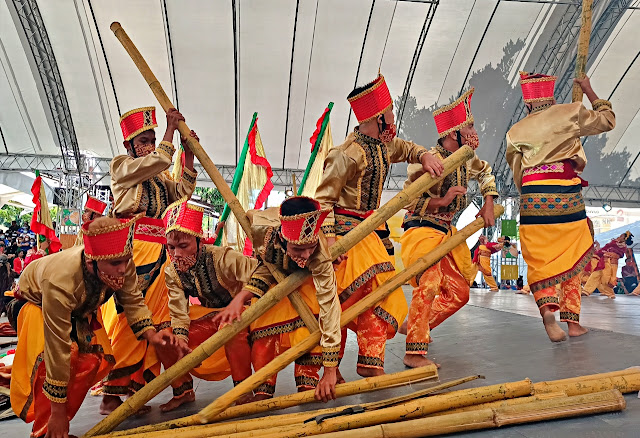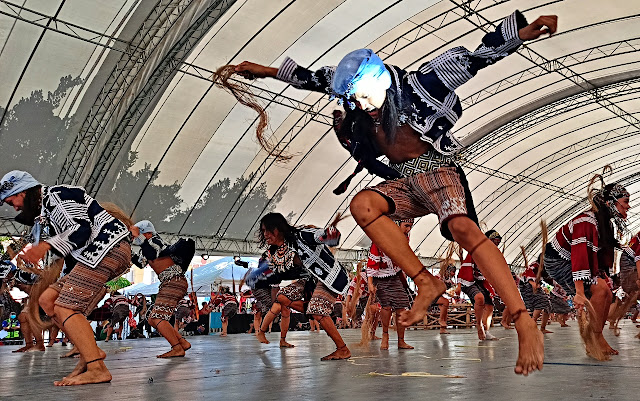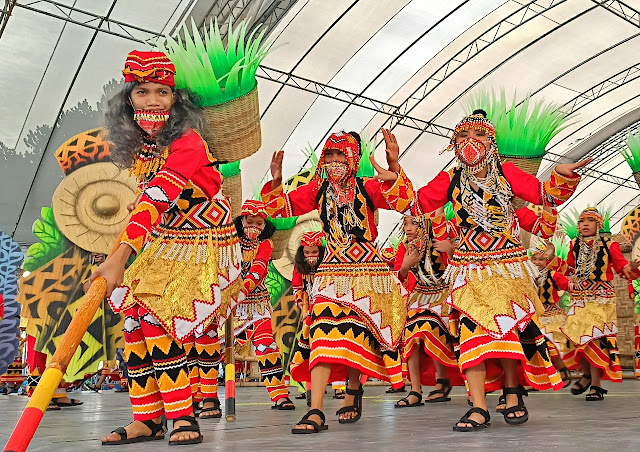After two years of online celebrations devoid of face to face revelry due to the pandemic, the Kadayawan Festival returned to a resounding drumming rhythm and a colorful street dance parade with a bang. In a fitting sense, this year's edition welcome back the whole city of Davao and its residents to normalcy. I had the privilege of joining other travel writers and Cebu Pacific Air in witnessing the revival of the city's annual festival, which has been known as the "Kadayawan Festival" since 1988.
The history of Kadayawan can be traced back to 1970 when then Mayor Elias B. Lopez encouraged all of Davao’s indigenous groups to showcase their thanksgiving rituals in the form of a choreographed dances to be performed in the streets.
The festival began as an opportunity to express gratitude for the city's abundant agricultural and marine harvest, but it soon evolved into a celebration of life and a display of the region's rich cultural heritage, earning the name "Apo Duwaling" in honor of the city's three defining symbols: Mount Apo, the Durian fruit, and the Waling-waling orchid.
A Display of Mindanao’s Rich Culture and People
Featuring exuberant thanksgiving rites performed in quick, rhythmic motions by dancers comprising contingents representing the many tribes of Mindanao, the festival today serves as a bridge that connects the region's cultural and traditional wealth to the consciousness of the current generation.
Davao City is home to 11 indigenous groups, each with their own unique cultural heritage. These groups include the Maranaos, also known as the "People of the Lake," who are notable for their Torogan ancestral homes that were traditionally occupied by the noble class. Another group is the Maguindanaoans, who come from the province of Maguindanao. The Klata-Guiangans are forest dwellers and were once feared warriors.
The Iranuns were known as a notorious band of pirates who roamed the waters of Malacca in Malaysia and the islands around Sulawesi in Indonesia. There’s also the Atas, who are highland dwellers, and the Kagans which is an Islamized ethnolinguistic tribe in Davao City. The Matigsalogs, Sama, Ovu Manuvu, Tagabawa, and Tausugs, also known as the "People of the Current," and are renowned sailors and pearl divers, round off the list.
Kadayawan Festival Highlights
The Kadayawan Festival is held almost the entire month of August, with the main festivities taking place on the third week. The major highlights of the Kadayawan Festival include the "Bantawan sa Kadayawan" and the grand street parade competition "Indak Indak sa Kadalanan / Kadayawan," both of which we were fortunate to witness.
Bantawan sa Kadayawan took place at the Bantawan Amphitheatre in Magsaysay Park, and it was a cultural convergence between Davao City's 11 different ethnic communities. The respective community members put on a cultural show complete with the playing of indigenous musical instruments and a brilliant display of traditional dances.
The Kadayawan Festival culminated the following day. Taking place on a Sunday, this is when Davao's many different ethnic communities — including those from outside of Davao — put on a stunning display of their dancing, singing, and playing of traditional instruments as they parade through the streets.
Most probably the most important highlight of the Kadayawan Festival, its name comes from the terms "Indak," meaning "dance," and "Kadalanan," denoting "street."
The Kadayawan Festival, like other of the festivals I covered across the country, was exhausting to document. However, for the amount of energy it sapped from my body, it also dished a delightful experience comprised of vibrant scenes and educational backstories about the various ethnic groups of Davao and the rest of Mindanao.
Walking back to join our group to watch the rest of the floats participating in the parade, I realized that this is the second time I’m witnessing the Kadayawan. The first time was back in 2012. However, during that time, I mostly partied with other Pinoy Travel Bloggers who were also there and only took a peek at the street dance parade for an hour.
This is why I am grateful to have another chance to experience the Kadayawan Festival, and what better time than when it finally returned after an absence of two years due to the pandemic.
Klook.com































